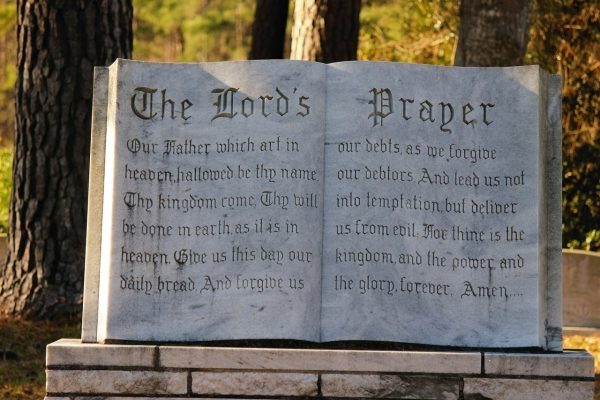Home>Theology and Spirituality>When Is The Feast Of The Baptism Of The Lord


Theology and Spirituality
When Is The Feast Of The Baptism Of The Lord
Published: February 27, 2024
Peter Smith, Editorial Director at Christian.net, combines deep insights into faith, politics, and culture to lead content creation that resonates widely. Awarded for his contributions to religious discourse, he previously headed a major organization for religious communicators, enhancing dialogue on faith's societal impacts.
Discover the significance and traditions of the Feast of the Baptism of the Lord in theology and spirituality. Learn about its history and observance.
(Many of the links in this article redirect to a specific reviewed product. Your purchase of these products through affiliate links helps to generate commission for Christian.net, at no extra cost. Learn more)
Table of Contents
History of the Feast of the Baptism of the Lord
The Feast of the Baptism of the Lord is a significant event in the Christian calendar, marking the baptism of Jesus by John the Baptist in the Jordan River. The feast has its origins in the early Christian Church and has been celebrated for centuries as a pivotal moment in the life of Jesus. The exact date of the feast has varied throughout history, but it is generally observed on the Sunday following the Epiphany, which falls on January 6th. The feast holds great importance in the liturgical calendar of the Western Christian Church, particularly in the Roman Catholic, Anglican, and Lutheran traditions. The Eastern Orthodox Church also commemorates the baptism of Jesus, although they celebrate it on the feast of Theophany, which corresponds to January 6th in the Gregorian calendar. The history of the Feast of the Baptism of the Lord is deeply rooted in the rich tapestry of Christian tradition and continues to be observed with reverence and joy by believers around the world.
Significance of the Feast in the Christian Calendar
-
Culmination of the Christmas Season: The Feast of the Baptism of the Lord marks the culmination of the Christmas season in the Christian calendar. It is the final event related to the early life of Jesus before the liturgical calendar transitions into the period of Ordinary Time. This feast serves as a bridge between the celebration of Jesus' birth and the beginning of his public ministry.
-
Revelation of the Trinity: The baptism of Jesus is a significant event in Christian theology as it is one of the rare occasions in the Gospels where the Holy Trinity is revealed. As Jesus emerges from the waters of the Jordan River, the Holy Spirit descends upon him in the form of a dove, and a voice from heaven proclaims, "This is my beloved Son, with whom I am well pleased." This moment is a powerful manifestation of the Father, Son, and Holy Spirit, affirming the divinity of Jesus and the unity of the Trinity.
-
Initiation of Jesus' Public Ministry: The baptism of Jesus is considered the inauguration of his public ministry. It symbolizes his identification with humanity and his willingness to fulfill the will of God. Through his baptism, Jesus sets an example for his followers, emphasizing the importance of repentance, humility, and obedience to God's plan.
-
Sacramental Significance: The Feast of the Baptism of the Lord also holds sacramental significance within the Christian faith. It is a reminder of the sacrament of baptism, through which believers are initiated into the Christian community and become adopted children of God. The baptism of Jesus serves as a model for the sacrament of baptism, highlighting the cleansing of sin and the bestowal of the Holy Spirit.
-
Unity of the Church: This feast is celebrated by various Christian denominations, serving as a unifying event in the liturgical calendar. It emphasizes the shared beliefs and traditions that bind Christians together, regardless of denominational differences. The commemoration of Jesus' baptism underscores the common faith in the triune God and the significance of spiritual rebirth through baptism.
The Feast of the Baptism of the Lord holds profound significance in the Christian calendar, encapsulating theological, sacramental, and unifying elements that resonate deeply with believers worldwide.
Traditions and Customs Associated with the Feast
-
Renewal of Baptismal Vows: In many Christian communities, the Feast of the Baptism of the Lord is a time for the renewal of baptismal vows. During this observance, individuals reaffirm their commitment to their baptismal promises, reflecting on the significance of their own baptism and its impact on their faith journey. This act of renewal serves as a spiritual reawakening, deepening the connection to one's baptismal identity and the call to live out the Christian faith.
-
Blessing of Water: The blessing of water is a prominent custom associated with the Feast of the Baptism of the Lord. Water, a symbol of purification and new life, holds special significance in the context of baptism. During the feast, water is blessed by clergy in a ceremonial ritual, invoking the Holy Spirit's presence and sanctifying the water for use in various sacramental and devotional practices. The blessed water is often distributed to the faithful, who may take it home to use for blessings and spiritual protection.
-
Baptismal Rite Reenactments: Some Christian congregations incorporate reenactments of the baptismal rite as part of their observance of the feast. This may involve a symbolic immersion in water or the pouring of water over the head, accompanied by prayers and hymns that celebrate the transformative power of baptism. These reenactments serve as a vivid reminder of the spiritual rebirth and cleansing that baptism represents, reinforcing the communal understanding of this sacred sacrament.
-
Feast Day Meals and Gatherings: In certain cultures, the Feast of the Baptism of the Lord is celebrated with special meals and communal gatherings. Families and friends come together to share in festive feasts, often featuring traditional dishes and culinary delights. These gatherings foster a sense of community and joy, providing an opportunity for fellowship and the strengthening of bonds within the faith community. The shared meal symbolizes unity and abundance, echoing the spiritual nourishment received through the sacrament of baptism.
-
White Attire and Decorations: White is a color often associated with the Feast of the Baptism of the Lord, symbolizing purity, newness, and the radiance of divine grace. In some traditions, worshippers may dress in white attire for church services on this feast day, reflecting the spiritual significance of baptism as a cleansing and transformative experience. Churches and homes may also be adorned with white decorations, such as flowers and banners, to evoke the sense of spiritual renewal and the joy of new beginnings.
-
Acts of Charity and Service: As a day that commemorates the initiation of Jesus' public ministry, the Feast of the Baptism of the Lord inspires acts of charity and service within the Christian community. Many churches and organizations use this occasion to engage in outreach efforts, such as serving the marginalized, conducting charitable projects, or advocating for social justice. These acts of compassion and solidarity reflect the spirit of Jesus' ministry and serve as a tangible expression of the baptismal call to love and serve others.
The traditions and customs associated with the Feast of the Baptism of the Lord enrich the spiritual experience of believers, fostering a deeper appreciation for the sacrament of baptism and its enduring significance in the life of the Church.
How the Feast is Celebrated Around the World
-
Italy: In Italy, the Feast of the Baptism of the Lord, known as "La Festa del Battesimo del Signore," is celebrated with religious processions, particularly in regions with strong Catholic traditions. These processions often feature clergy, parishioners, and local communities parading through the streets, carrying religious banners and icons while singing hymns and offering prayers of thanksgiving. The festivities may culminate in communal gatherings and shared meals, fostering a sense of spiritual unity and joy.
-
Greece: In Greece, the feast is observed as part of the larger celebration of Theophany, known as "Theofaneia." One of the central customs involves the blessing of the waters, where priests throw a cross into the sea, rivers, or lakes, and brave swimmers dive into the cold waters to retrieve it. This ritual symbolizes the baptism of Jesus in the Jordan River and is believed to bring blessings and purification to those who participate.
-
Ethiopia: In the Ethiopian Orthodox Church, the Feast of the Baptism of the Lord, referred to as "Timkat," is a vibrant and colorful celebration. The faithful gather for elaborate processions, adorned in traditional attire, and carrying ornate replicas of the Ark of the Covenant. Hymns and prayers fill the air as the clergy and laity reenact the baptism of Jesus, emphasizing the spiritual significance of the event. Timkat is a time of great rejoicing and spiritual renewal, uniting believers in their shared faith and heritage.
-
United States: In the United States, various Christian denominations mark the Feast of the Baptism of the Lord with special church services and liturgical observances. Many congregations incorporate the renewal of baptismal vows into their worship, inviting members to reflect on the promises of their own baptism and recommit to their faith journey. The blessing of water and baptismal fonts is also a common practice, symbolizing the sanctifying and life-giving nature of the sacrament of baptism.
-
Philippines: In the predominantly Catholic Philippines, the feast is celebrated with fervor and devotion. Parishes hold processions and reenactments of the baptism of Jesus, often incorporating traditional music and dance. The faithful participate in the blessing of water, which is then distributed to the congregation as a sacramental reminder of their baptismal identity. The Feast of the Baptism of the Lord is a time of spiritual reflection and communal celebration, strengthening the bonds of faith within the Filipino Christian community.
-
India: In India, where Christianity is a minority religion, the feast is observed with reverence and cultural diversity. Christian communities gather for special church services, where the baptism of Jesus is commemorated through scripture readings, hymns, and sermons. The faithful may also engage in acts of charity and outreach, extending the spirit of Jesus' ministry to those in need. The feast serves as a testament to the universal nature of the Christian faith, transcending geographical and cultural boundaries.
The Feast of the Baptism of the Lord is celebrated around the world with a rich tapestry of customs and traditions, reflecting the diverse expressions of faith and the enduring significance of this sacred event in the life of the Church.
Theological and Spiritual Reflections on the Baptism of Jesus
The baptism of Jesus holds profound theological and spiritual significance within Christian doctrine and practice. It serves as a pivotal moment in the life of Jesus, carrying layers of meaning that continue to inspire theological reflection and spiritual contemplation.
Read more: When Is The Feast Of Saint John The Baptist
1. Divine Revelation
The baptism of Jesus is a moment of divine revelation, where the identity of Jesus as the Son of God is unmistakably proclaimed. The descent of the Holy Spirit and the voice from heaven affirm the Trinitarian nature of God, revealing the Father, Son, and Holy Spirit in a unified manifestation. This theological reflection underscores the mystery of the Trinity and the divine nature of Jesus, laying the foundation for the Christian understanding of God's triune being.
2. Human Solidarity
In submitting to baptism, Jesus identifies with humanity in a profound way. Though sinless, Jesus enters the waters of baptism to stand in solidarity with fallen humanity, foreshadowing his redemptive mission. This act of humility and solidarity reflects the depth of God's love for humanity, as Jesus willingly takes on the human condition to bring about salvation and reconciliation.
3. Inauguration of Ministry
The baptism of Jesus marks the inauguration of his public ministry, signifying the beginning of his mission to proclaim the kingdom of God and bring about the salvation of humanity. Through his baptism, Jesus is anointed by the Holy Spirit for his ministry, empowering him to preach the good news, heal the sick, and demonstrate God's love through his actions. This theological reflection highlights the continuity between Jesus' baptism and his mission to fulfill God's redemptive plan.
4. Sacramental Significance
The baptism of Jesus serves as a paradigm for the Christian sacrament of baptism. It symbolizes the cleansing of sin and the bestowal of the Holy Spirit upon believers. Through baptism, individuals are initiated into the body of Christ, becoming part of the community of faith and heirs to the promises of God. This theological reflection emphasizes the transformative and regenerative nature of baptism, as believers are united with Christ in his death and resurrection.
Read more: When Is The Feast Of Saint Augustine
5. Call to Discipleship
The baptism of Jesus also conveys a profound call to discipleship and obedience to God's will. As Jesus emerges from the waters, the voice from heaven declares his belovedness and divine approval. This moment affirms Jesus as the obedient Son who fulfills the Father's plan, setting an example for his followers. The theological reflection on Jesus' baptism underscores the call for believers to align their lives with the will of God, embracing their identity as beloved children and living in faithful obedience.
The theological and spiritual reflections on the baptism of Jesus invite believers to contemplate the depth of God's revelation, the transformative power of sacramental grace, and the call to discipleship and solidarity with humanity. This sacred event continues to inspire theological inquiry and spiritual growth, shaping the faith and practice of the Christian community.













